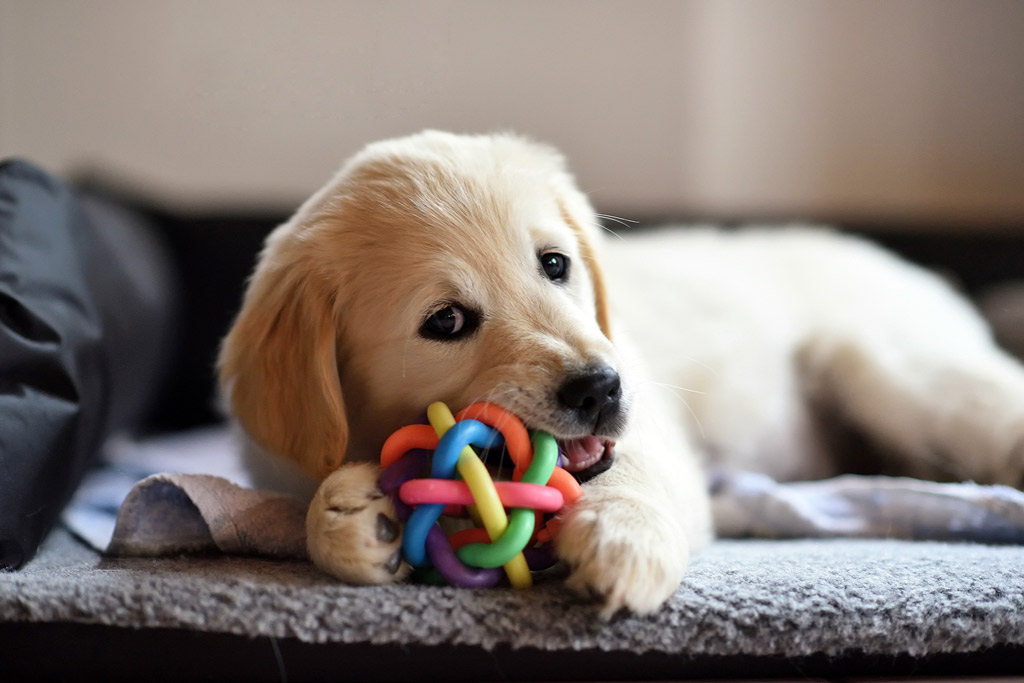
Leaving your pooch alone is inevitable, but doesn’t have to be boring!
So, how can you keep your dog entertained while at work?
Let’s see how to to put these in practice. 😉
Before Leaving Your Dog Alone…
Before diving into the fun stuff your dog can do while you are at work, there are a few considerations regarding your dog’s acclimatisation and safety:
- Crafting a dog safe zone.
- Dog-proofing your home.
- Dog home alone safety (which also includes training your dog to be alone and exercising him before leaving).
Also…
Don’t make a big deal out of it!
It might be difficult at first, but keep goodbyes low key.
Fussing over your dog before leaving is counterproductive since it can lead your pooch to develop anxiety and stress. So, exit quietly after leaving your dog content with a toy in his safe zone.
And now… it’s time to dive into dog entertainment!
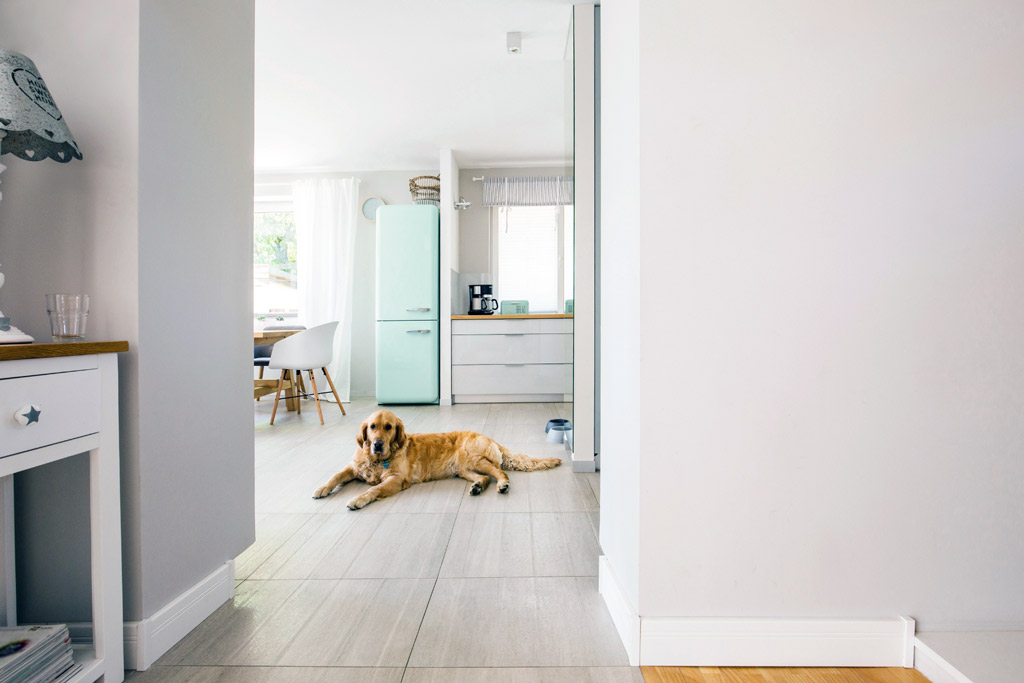
How to Keep My Dog Entertained While at Work?
Keeping your dog entertained, i.e. physically and mentally stimulated, prevents many behavioural problems and health issues such as:
- Restlessness and boredom.
- Destructive chewing.
- Over-excitability and rough play.
- Depression.
- Frequent barking or whining.
- Obesity and lethargy.
- Escaping or digging.
- Irritability.
So, whilst you get your pooch used to staying alone gradually, there are a few actions that you can take to keep your dog entertained and also minimize your dog’s time alone.
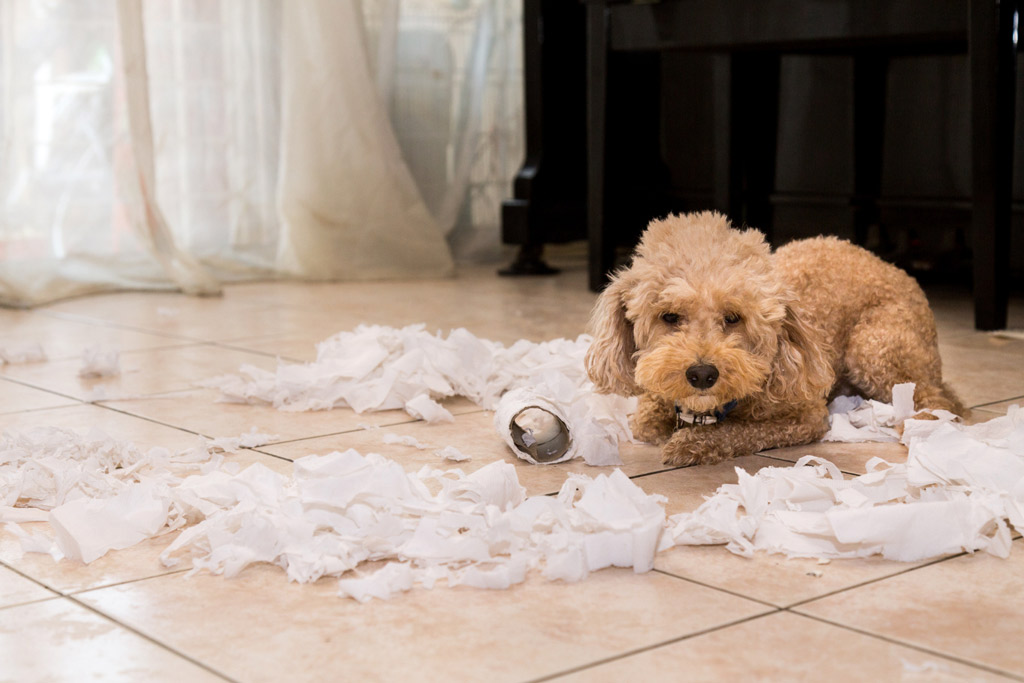
How can you keep your dog entertained while at work?
Follow these steps to keep your pooch entertained:
#1 – Provide a Challenge
Interactive toys are the most obvious solution, but also the most effective when you want your pooch to be mentally challenged in your absence.
They have many benefits:
- They provide great entertainment and stimulation, replacing unwanted behaviours.
- These toys make your pup work for his food, since they are food dispensers i.e. you are giving your doggy a job to do and he will like that!
- It helps you feed your pooch, especially if he seems to lose his appetite when alone.
- These interactive toys also make your dog slow down when he’s eating, preventing him from swallowing his whole share in 1 minute!
- They can substitute the food bowl. Feeding your dog from a bowl can be a missed opportunity for activity. Make your pooch work for that meal! You can set aside a part of your dog’s daily food intake and feed him using a toy.
- You can fill these toys up with kibble, treats, frozen blueberries, or a homemade meal.
Insider Tip: If your dog has never played with interactive toys before, he’s going to need you to show him how they work. Show your pooch what to do to get the treats out, and get him excited about it!
Encourage your pup to play with them when you are at home, if he needs to learn and practise. Once he knows what to do, only take the toys out prior to leaving him alone or when you want him to be entertained by himself. This way, you prevent him from getting bored of the toy.
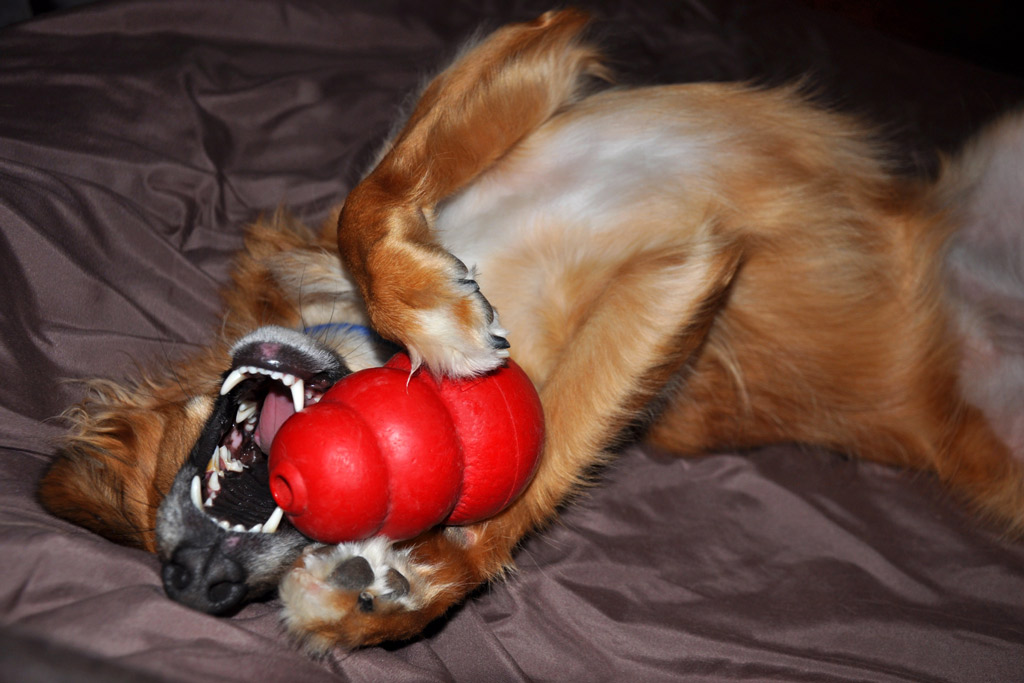
There are many options, which makes it easier to find a toy suitable for your dog’s personality:
- Stuffed Soft Toys: Kongs* are great for most dogs since you they come in different sizes and for different ages. They even have stronger rubber options for big chewers! You can even freeze them for an extra challenge, especially during those hot summer months. Also, they are easy to clean with a brush and dishwasher safe.
- Treat Release Toys: Bob-A-Lot* is a hard dispenser toy to engage your dog’s brain in figuring out how to release the treat from the toy.
- Puzzle Toys: This is like a scent game. It consists of hiding treats in a particular way that are delimited by the toy. Snuffle Mats* provide great entertainment for dogs who love scent work.
- Treat dispensers with a camera: If you also want to keep an eye on your dog too, you can get your hands on a dog camera with 2-way audio and treat dispenser function. Furbo* is a great example of this.
*Note: the links above will take you to Amazon.
Start off with something simple and let your dog master that toy before increasing the challenge. Otherwise, your dog will get frustrated and lose interest! You can also alternate toys to avoid boredom.
P.S. If you are wondering what to stuff these toys with, our high-value dog treats blog post will give you ideas you can start with.
#2 – Leave a Companion
Your dog is likely to sleep when alone. On average, adult dogs sleep between 14-16 hours a day (including at night) and puppies can sleep up to 18 hours.
Apart from his bed and cosy blanket…
Why not leave a plush toy, which is known to provide emotional comfort?
Puppies are used to sleeping on top of their sisters and brothers when they are born. So having a fluffy toy as a companion is of great comfort to them.
For instance, Smart Pet Love Snuggle Puppy Behavioral Aid Toy is particularly designed to soothe your pooch!
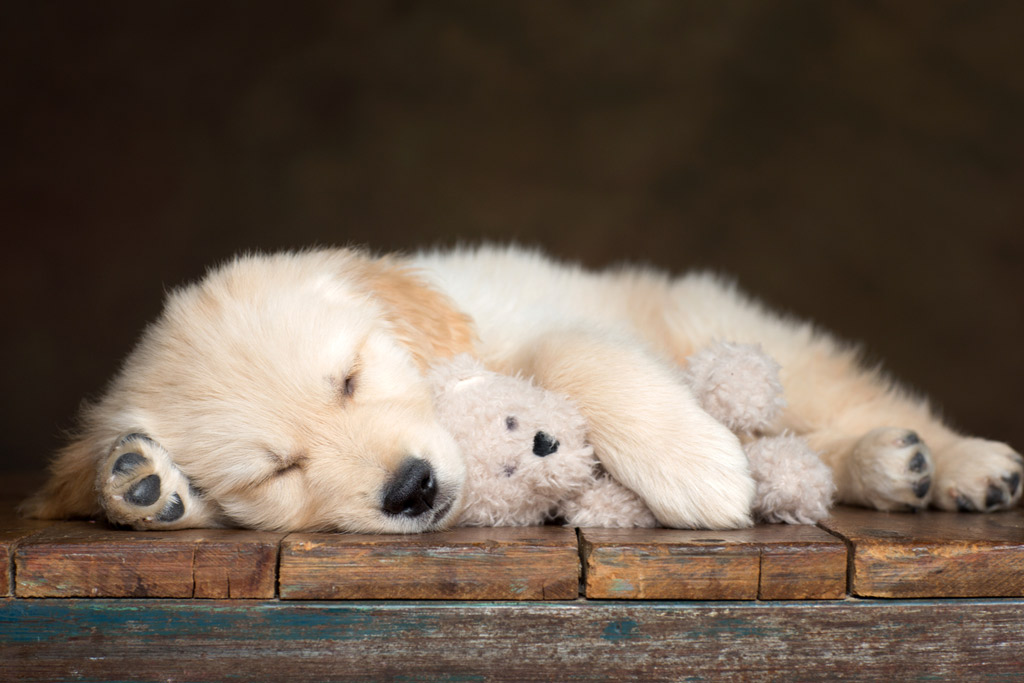
However, it’s not only great for pups. Adult dogs are also fond of plush toys, even personalized ones too (i.e., cloned versions of themselves). You can see what I’m referring to in my favourite dog gifts page. 😉
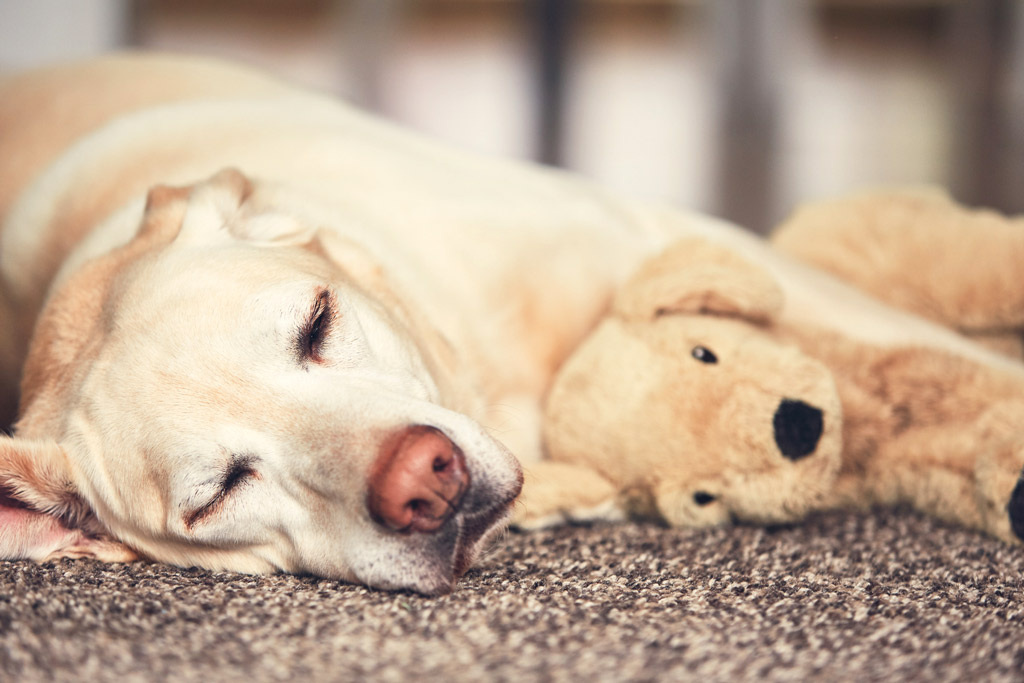
#3 – Let Your Dog Chew
Yep, you heard that right!
I am talking about chew toys and treats, not your shoes!
Dog chew toys are not only great to keep your dog busy, but also help promote healthy teeth and gums. Also, if your pup is teething, they provide pain relief.
There are tons of indestructible chew toys out there, made with tough but safe rubber that will keep your dog away from chewing anything else!
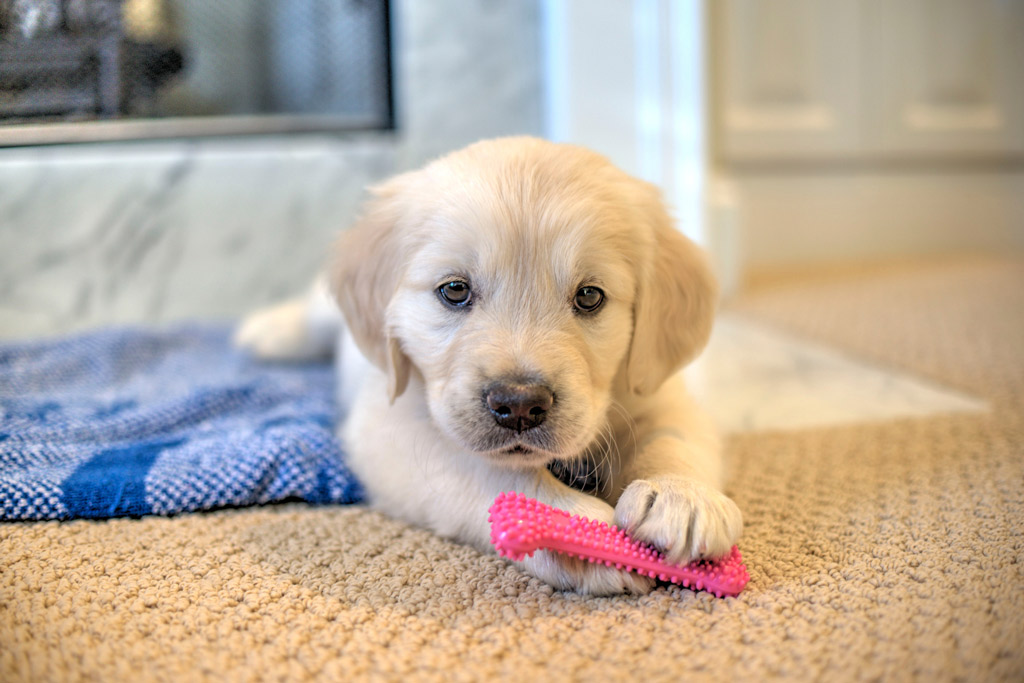
Apart from flavoured chew toys (like Nylabone Flavored Bone – Amazon link), there are chew treats shaped like a bone that can also keep your dog entertained.
I’d go for a single ingredient and dehydrated option, which are healthier and free of fillers.
Baxter, the first dog I fostered, enjoyed chewing his chicken twist long after the meat was gone!
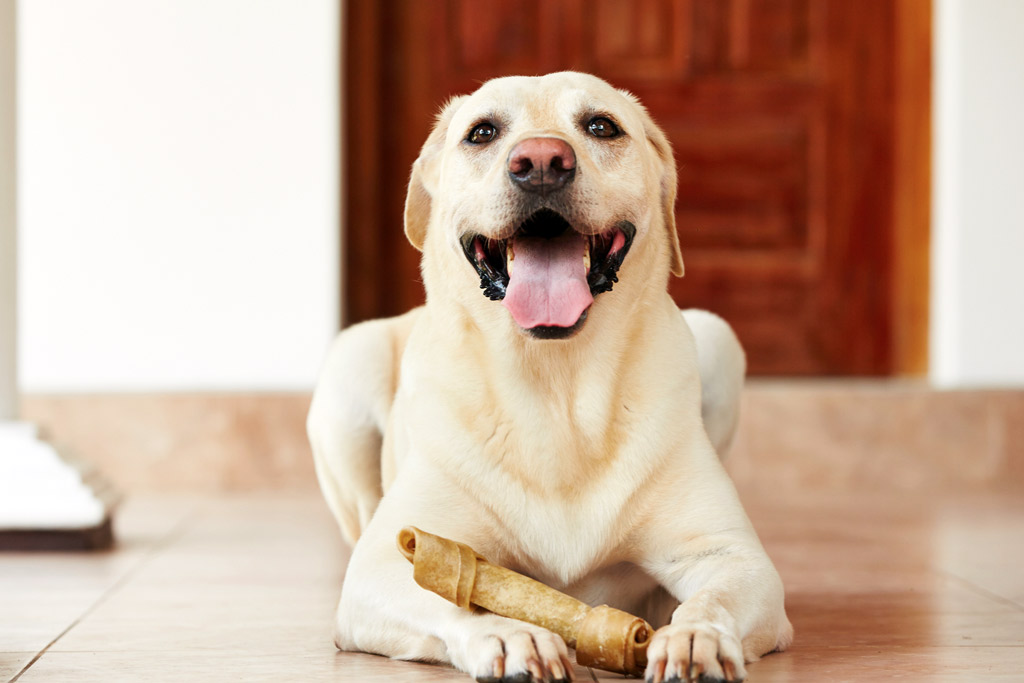
#4 – Tune In To Sounds and Sights
If your dog lives in a busy household, total silence might be uncomfortable for your pooch. He might be used to the calm of the night, but he also knows that you are at home at that time.
So, before leaving, you could:
- Leave the radio on and choose a non-stop classical music channel; dogs find it relaxing.
- Turn on the White Noise Sound Machine (Amazon choices), it works wonders with dogs that suffer from anxiety. It also helps them sleep better (this is also applicable for humans!)
- Alternatively, you can leave the TV on, tuned-in to Animal Planet. They are mostly interested in the colour and the light that appears on the screen. However, if you know that your dog isn’t interested in the TV, don’t bother.
#5 – Let Your Dog Look Out
It is not only cats that love looking out the window. Dogs too love keeping an eye on what’s going on outside!
Unless your dog is reactive and barks excessively, you can let your pooch have a pic into the neighbourhood or your backyard.
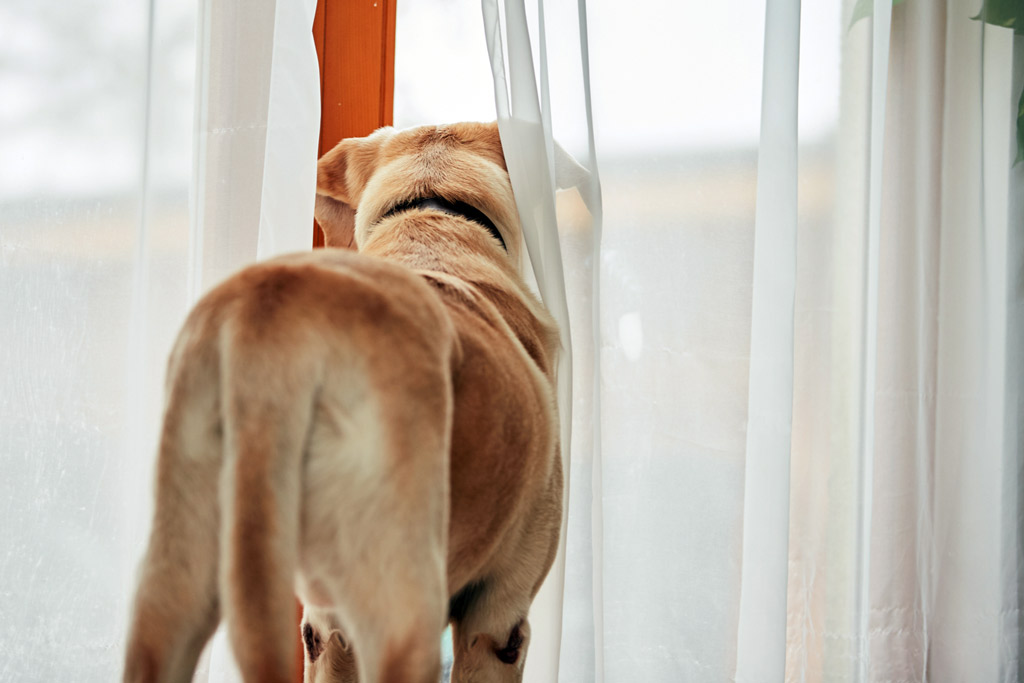
#6 – Plan a Scavenger Hunt
This is a variation of Hide-and-Seek.
You can organize a scent game for your dog to play in his safe zone, i.e., in this case, the area where your pooch is going to be when you are away.
It can be as simple as hiding some treats (small amounts of non-perishable food) and even toys around his area. Your pooch can use his senses to find these rewards.
Insider Tip: Try to rotate this game so it doesn’t become a routine. Otherwise, your pup will spend his day sniffing out for tasty rewards!
#7 – Arrange a Lunchtime Visit
If you work close to home and you have lunch breaks, you can go back home and take your furry friend for a midday walk or potty break.
Alternatively, ask someone you trust and is available, to spend some time with your dog. Your pooch will appreciate the company and the potty break. Also, this visit could become a dog playdate if he/she’s also a dog owner. 😉
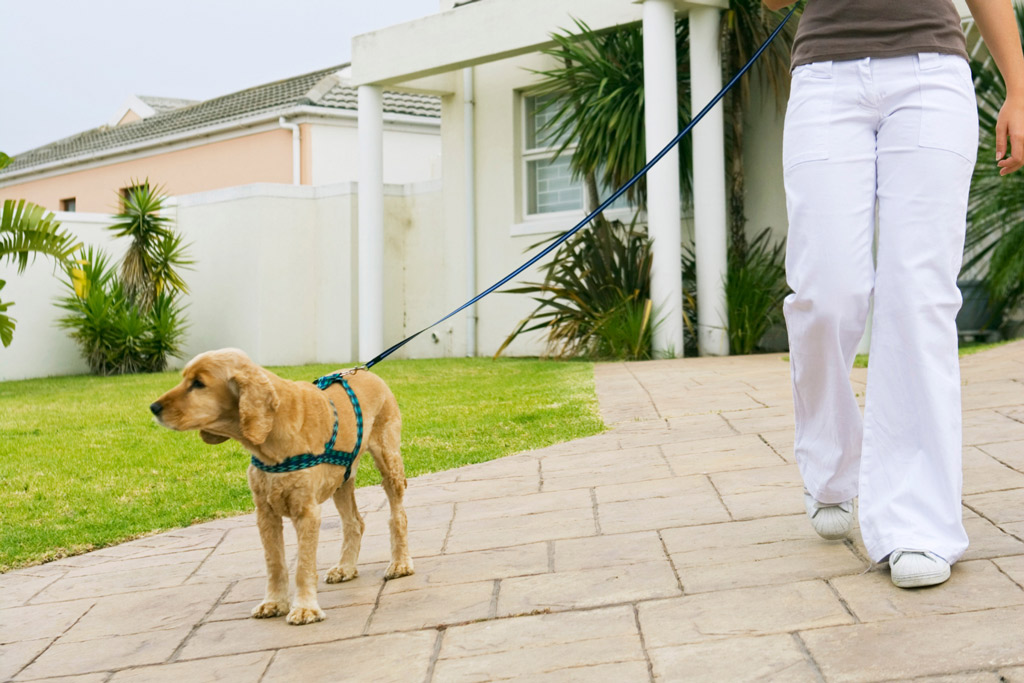
#8 – Take Your Dog to Work
Is your company pet-friendly by any chance?
Then consider bringing your pooch along with you to work!
Obviously, not everyone is in a position to do this. Also, you can consider the possibility of working from home occasionally.
#9 – Hire a Dog Sitter or Dog Walker
If nobody can spend some time with your pooch, then it’s worth considering daycare, a dog sitter or a dog walker
But, if you are thinking:
Who is this person and how can I trust them to take care of my pooch?
In my favourite dog care post, I share what I think fits the bill for this purpose. Head over there for more!
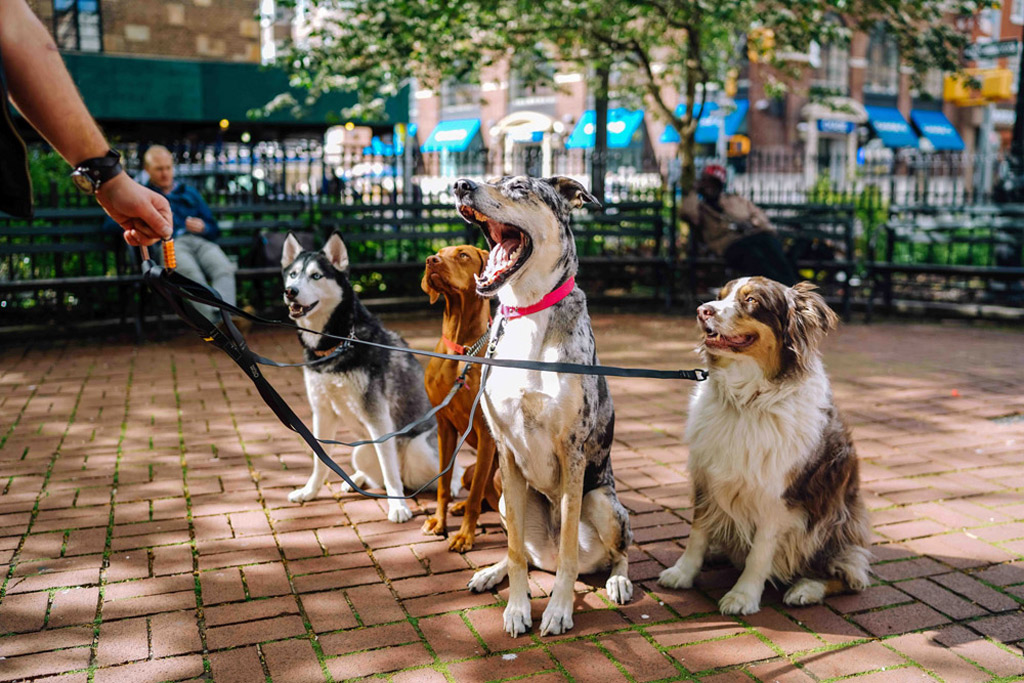
Finally, take the next step by heading over to The 5 pillars to a happy and healthy dog to further solidify and grow that special bond with your dog.
Related Questions
There are many activities that can stimulate your dog and challenge him mentally, like a training session, playing a scent game, learning a new trick, or food dispenser toy.
Dogs don’t need to be entertained at all times. However, they need mental and physical stimulation on a daily basis such as exercise, training and playtime. Depending on your dog’s breed, energy levels and age, your pooch will need between 30 minutes to 2 hours of daily stimulation.
Yes, dogs get bored; they need mental and physical stimulation daily. Plus, although some dogs can tolerate better being alone than others, it isn’t safe to leave your pooch alone at home all day.
Adult dogs can be left alone between 4 to 6 hours in a single stretch. One of the reasons is related to your dog’s basic need for elimination (every 6 hours). Puppies and senior dogs will need to eliminate more often. Find out more at our How Long Can I Leave My Dog Alone? blog post.
